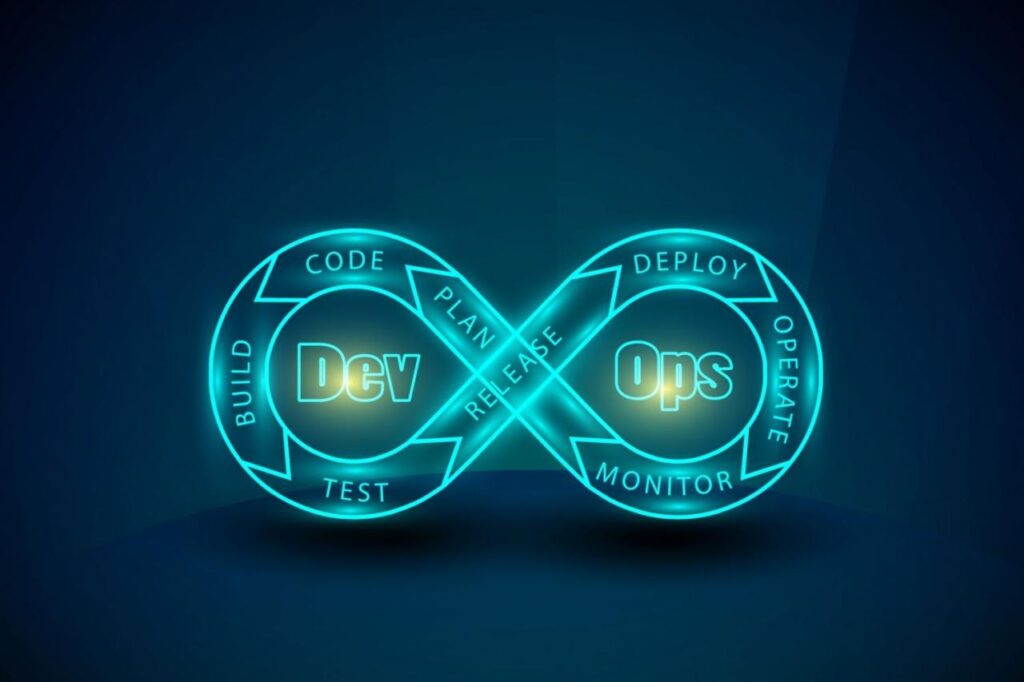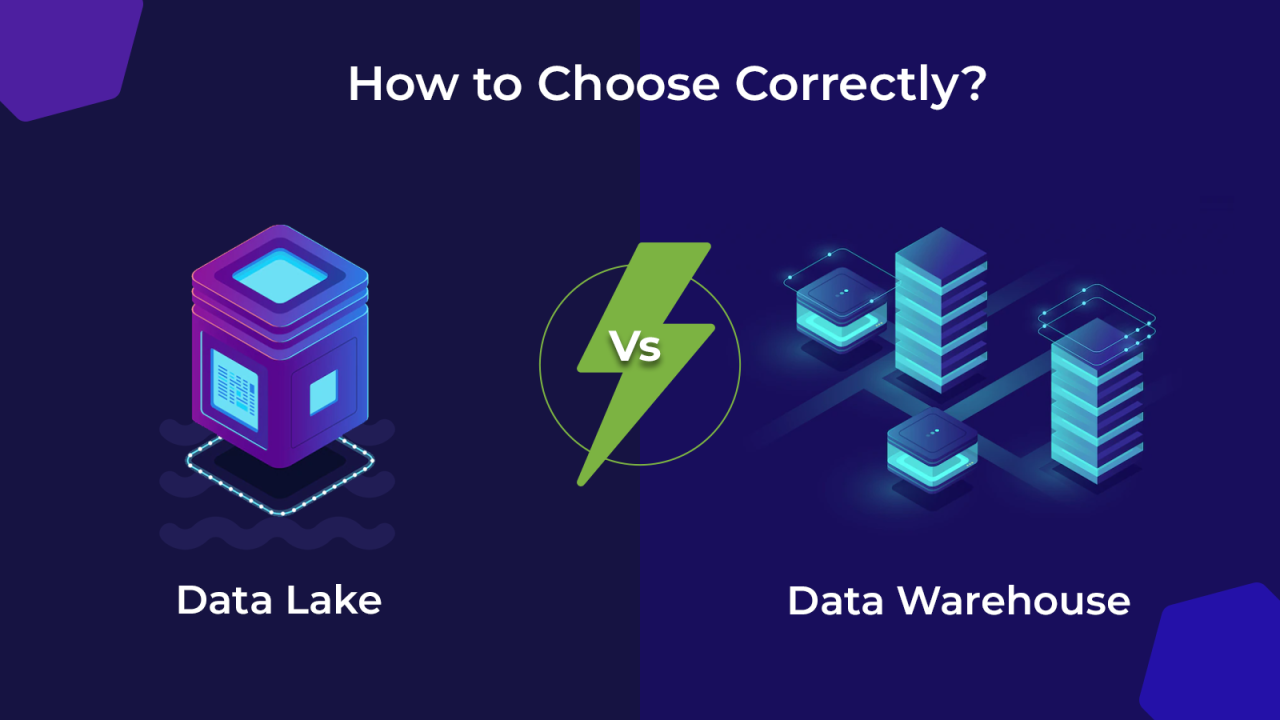In the relentless pursuit of agile software delivery, modern enterprises are increasingly embracing DevOps, a methodology that breaks down silos between development and operations teams to accelerate release cycles. However, as speed becomes paramount, the critical imperative of security often struggles to keep pace. The integration of security practices throughout the entire DevOps pipeline, known as Secure DevOps or DevSecOps, isn’t just a best practice; it’s a non-negotiable strategy. It’s about embedding security considerations from the very inception of a project, transforming it from a late-stage bottleneck into an intrinsic, automated part of the continuous delivery process. This proactive approach ensures that organizations can not only build fast, but also build secure, resilient, and compliant applications, safeguarding digital assets and customer trust in an increasingly hostile cyber landscape.
The Evolution of Security: From Afterthought to Integration
To truly grasp the necessity and sophistication of Secure DevOps, it’s vital to understand how security practices have evolved within the software development lifecycle, moving from isolated checks to pervasive integration.
A. Traditional Security: The ‘Gatekeeper’ Era
Historically, security was often a separate, often late-stage, concern in the Waterfall development model.
- Late-Stage Testing: Security testing (e.g., penetration testing, vulnerability scanning) typically occurred towards the end of the development cycle, just before deployment. Issues discovered at this late stage were costly and time-consuming to fix, often leading to delays and rushed patches.
- Security as a Bottleneck: Security teams were often seen as ‘gatekeepers’ or ‘blockers,’ slowing down releases by imposing manual reviews and extensive audits right before launch. This created friction between development, operations, and security teams.
- Adversarial Relationship: The relationship between development and security was often adversarial, with developers feeling that security imposed unnecessary restrictions, and security teams frustrated by developers’ lack of security awareness.
- Limited Visibility: Security teams often had limited visibility into the development process, making it difficult to understand context or proactively identify risks early on.
B. The Rise of Agile and DevOps: Speed Without Security
The adoption of Agile methodologies and subsequently DevOps revolutionized development speed but initially often left security lagging behind.
- Rapid Iterations: Agile’s focus on short sprints and rapid iterations meant code was pushed to production much faster, often without adequate security reviews.
- Automated Pipelines: DevOps introduced automated CI/CD (Continuous Integration/Continuous Delivery) pipelines, allowing code to move from commit to production in minutes. Security, still largely manual, couldn’t keep up.
- Increased Attack Surface: Faster releases and the adoption of cloud-native architectures (microservices, containers, serverless) dramatically increased the attack surface, with more endpoints, dynamic environments, and complex interconnections.
- Shift Left, But Not for Security (Initially): While ‘shift left’ became a mantra for testing and quality assurance (QA), applying the same principle to security was slower to gain traction. Security remained an afterthought for many teams focused purely on speed.
- Reactive Security Posture: Organizations remained largely reactive, focusing on responding to breaches or vulnerabilities after they occurred, rather than proactively preventing them.
C. The Imperative for DevSecOps: Security as Code
The increasing frequency and severity of cyberattacks, coupled with regulatory pressures, made it clear that security had to be integrated into the DevOps pipeline, giving rise to DevSecOps.
- Security as a Shared Responsibility: DevSecOps advocates for security becoming a shared responsibility across development, operations, and security teams, fostering a culture of collective ownership.
- Automated Security in CI/CD: Integrating automated security testing tools directly into the CI/CD pipeline, ensuring security checks are performed continuously, from code commit to deployment.
- Shift Left for Security: Embedding security practices and considerations as early as possible in the development lifecycle, from requirements gathering and design, through coding and testing.
- Security as Code (Policy as Code): Defining security policies, configurations, and compliance checks as code, versioning them, and automating their enforcement, just like infrastructure.
- Proactive Security Posture: Moving from a reactive stance to a proactive one, aiming to prevent vulnerabilities and misconfigurations before they reach production, thereby reducing risk and cost.
This evolution signifies a critical understanding: in the fast-paced world of modern software, security cannot be a separate phase; it must be an intrinsic, automated, and continuous part of the entire delivery process.
Core Principles of Secure DevOps
Secure DevOps is built upon a set of foundational principles that guide its implementation, integrating security seamlessly into every stage of the software delivery pipeline.
A. Shift Left Security: Early and Continuous Integration
The most fundamental principle of Secure DevOps is to shift security left, meaning embedding security activities as early as possible in the Software Development Life Cycle (SDLC) and maintaining them continuously.
- Requirements and Design: Incorporate security requirements, threat modeling, and security architecture reviews during the initial planning and design phases, identifying potential vulnerabilities before a single line of code is written.
- Code Development: Implement security best practices during coding (e.g., secure coding guidelines), conduct peer code reviews with a security lens, and use static application security testing (SAST) tools to scan code as it’s being developed.
- Testing and QA: Integrate dynamic application security testing (DAST), software composition analysis (SCA), and penetration testing into automated testing pipelines.
- Deployment and Operations: Continuously monitor production environments for security threats, implement immutable infrastructure, and automate security patching and configuration management.
This continuous integration ensures that security is an ongoing concern, not just a final audit.
B. Automation and Orchestration: Speeding Up Security
To keep pace with DevOps velocity, security processes must be highly automated.
- Automated Security Testing: Integrate SAST, DAST, SCA, and IaC security scanning tools directly into the CI/CD pipeline, automatically running checks on every code commit or build.
- Automated Policy Enforcement: Define security policies as code (e.g., using Open Policy Agent – OPA) and automate their enforcement throughout the infrastructure and application stack.
- Automated Remediation: For certain types of vulnerabilities, automate remediation steps or automatically block deployments if critical security issues are detected.
- Orchestration: Use tools (e.g., Jenkins, GitLab CI, GitHub Actions) to orchestrate security tests and processes as part of the automated build and deployment workflows, ensuring they run consistently and without manual intervention.
Automation reduces human error, increases efficiency, and ensures consistent security checks at speed.
C. Security as Code (Policy as Code): Versioning and Consistency
Treating security policies and configurations as code is central to Secure DevOps.
- Version Control: Security policies (e.g., firewall rules, IAM roles, compliance checks) are defined in machine-readable formats (e.g., YAML, JSON, DSLs) and stored in version control systems (e.g., Git). This allows for change tracking, rollbacks, and collaboration.
- Automated Validation: Use tools to validate these security policies against desired states, preventing misconfigurations or non-compliant deployments.
- Consistent Enforcement: Ensures that security configurations are applied consistently across all environments (development, staging, production), eliminating configuration drift and reducing the ‘snowflake server’ problem.
- Infrastructure as Code (IaC) Security: Scan IaC templates (e.g., Terraform, CloudFormation) for security misconfigurations before infrastructure is provisioned.
This approach brings transparency, auditability, and consistency to security enforcement.
D. Collaborative Culture: Shared Responsibility
DevSecOps fosters a collaborative culture where security is a shared responsibility, moving away from a siloed approach.
- Cross-Functional Teams: Security experts work closely with development and operations teams from the beginning, sharing knowledge and embedding security best practices.
- Security Champions: Designate security champions within development teams to act as a liaison, provide local security expertise, and promote security awareness.
- Blameless Post-Mortems: When security incidents occur, focus on blameless post-mortems to identify systemic issues and learn from failures, rather than assigning individual blame.
- Knowledge Sharing: Encourage continuous learning and knowledge sharing across all teams regarding emerging threats, security best practices, and new tools.
This cultural shift is paramount for embedding security into the DNA of the organization.
E. Continuous Monitoring and Feedback: Real-time Visibility
Security in a dynamic DevOps environment requires constant vigilance and real-time insights.
- Continuous Monitoring: Implement real-time monitoring of applications and infrastructure for security events, anomalies, and potential threats in production. This includes log analysis, intrusion detection, and behavioral analytics.
- Integrated Feedback Loops: Ensure that security findings from automated tests or production monitoring are immediately fed back to development teams, allowing for rapid remediation and continuous improvement of security posture.
- Vulnerability Management: Establish robust processes for tracking, prioritizing, and remediating vulnerabilities discovered at any stage of the SDLC.
- Threat Intelligence: Integrate threat intelligence feeds to stay updated on emerging attack vectors and proactively adjust security defenses.
This continuous feedback loop is vital for maintaining a strong security posture in a rapidly changing environment.
Integrating Security Tools Throughout the DevOps Pipeline
Implementing Secure DevOps requires embedding a diverse set of security tools at every stage of the CI/CD pipeline, creating a layered defense.
A. Plan and Design Phase
Security starts even before code is written.
- Threat Modeling: Tools and methodologies (e.g., STRIDE, OWASP Threat Dragon) to systematically identify potential threats and vulnerabilities in the application’s design. This proactive approach helps build security in from the ground up.
- Security Requirements Definition: Incorporating security requirements (e.g., authentication, authorization, data encryption) into user stories and design specifications.
- Security Architecture Review: Expert review of proposed architectural designs to identify security flaws or best practice deviations.
B. Code and Build Phase
As code is being written and compiled, automated checks catch issues early.
- Static Application Security Testing (SAST): Tools (e.g., SonarQube, Checkmarx, Fortify) that analyze source code, bytecode, or binary code without executing it. These tools identify common vulnerabilities (e.g., SQL injection, cross-site scripting, buffer overflows) and coding errors. SAST integrates directly into IDEs (Integrated Development Environments) and CI/CD pipelines, providing immediate feedback to developers.
- Software Composition Analysis (SCA): Tools (e.g., Snyk, Mend, OWASP Dependency-Check) that identify known vulnerabilities in open-source components and third-party libraries used within the application. Given the heavy reliance on open-source, SCA is crucial for managing supply chain risks. These tools can automatically scan dependencies during the build process and alert on vulnerable versions.
- Secret Management: Tools (e.g., HashiCorp Vault, AWS Secrets Manager, Azure Key Vault) for securely storing and managing credentials, API keys, and other sensitive information. These tools ensure secrets are not hardcoded into applications or configuration files, preventing exposure.
- Container Image Scanning: If containers are used, tools (e.g., Clair, Trivy, Docker Scan) scan container images for known vulnerabilities in their operating system layers and application dependencies. This ensures that the base images used for deployments are secure.
C. Test Phase
Before deployment, more comprehensive security tests are run against the running application and its infrastructure.
- Dynamic Application Security Testing (DAST): Tools (e.g., OWASP ZAP, Burp Suite, Invicti) that test the running application from the outside, simulating attacks to identify vulnerabilities that SAST might miss (e.g., authentication flaws, misconfigurations, runtime errors). DAST tools are often integrated into automated testing environments.
- Interactive Application Security Testing (IAST): Tools that combine elements of SAST and DAST, monitoring application behavior from within during testing to provide more accurate and contextual vulnerability detection with fewer false positives.
- Fuzz Testing: Sending malformed or unexpected inputs to an application to uncover crashes or vulnerabilities that could be exploited. This can be automated as part of the test suite.
- Infrastructure as Code (IaC) Security Scanners: Tools (e.g., Checkov, tfsec, Terrascan) that scan Terraform, CloudFormation, Ansible, or Kubernetes manifests for security misconfigurations and compliance violations before the infrastructure is provisioned. This shifts infrastructure security left.
- Penetration Testing (Pentesting): While often done manually, automated aspects can be integrated. Independent security experts simulate real-world attacks to find deeper, more complex vulnerabilities that automated tools might miss. Regularly scheduled penetration tests are critical.
D. Release and Deploy Phase
Security checks continue right up to and after deployment.
- Pre-Deployment Security Checks: Automated gates in the CI/CD pipeline that prevent deployment if critical security vulnerabilities are detected or if compliance policies are violated. This ensures only secure code makes it to production.
- Immutable Infrastructure: Provisioning new, fully patched and configured infrastructure instances rather than updating existing ones. This reduces configuration drift and makes environments more consistent and secure.
- Secure Configuration Management: Automating the application of secure configurations (e.g., CIS benchmarks) to servers, operating systems, and applications using tools like Ansible, Chef, or Puppet.
- Container Orchestration Security: Configuring Kubernetes or other container orchestration platforms with strong network policies, role-based access control (RBAC), and pod security policies to isolate workloads and prevent unauthorized access.
E. Monitor and Operate Phase
Security is a continuous effort that doesn’t end with deployment; it intensifies in production.
- Security Information and Event Management (SIEM): Centralized logging and analysis platforms (e.g., Splunk, ELK Stack, Azure Sentinel) that aggregate security logs from all applications, infrastructure, and network devices to detect threats, identify anomalies, and facilitate incident response.
- Cloud Security Posture Management (CSPM): Tools (e.g., Palo Alto Networks Prisma Cloud, Lacework) that continuously monitor cloud configurations for misconfigurations, compliance violations, and security risks across various cloud services.
- Cloud Workload Protection Platforms (CWPP): Tools that provide runtime protection for workloads (VMs, containers, serverless functions) in cloud environments, including vulnerability management, network segmentation, and system integrity monitoring.
- Runtime Application Self-Protection (RASP): Security technology that integrates into an application’s runtime environment, detecting and blocking attacks in real-time by analyzing application behavior.
- Continuous Compliance Monitoring: Tools that automatically audit production environments against regulatory requirements (e.g., HIPAA, GDPR, PCI DSS) and internal security policies, providing ongoing compliance reports.
- Threat Intelligence Platforms: Integrating external threat intelligence feeds to automatically update security defenses against emerging attack vectors and known malicious IPs/domains.
Key Enablers and Drivers for Secure DevOps Adoption
Several factors are accelerating the adoption of Secure DevOps practices, transforming it from a niche concept to a mainstream imperative.
A. Escalating Cyber Threats
The sheer volume, sophistication, and impact of cyberattacks (e.g., ransomware, supply chain attacks, zero-day exploits) are forcing organizations to prioritize security earlier and more deeply in their development processes. The cost of a breach far outweighs the investment in proactive security.
B. Regulatory Compliance and Data Privacy
An ever-tightening web of regulations (e.g., GDPR, CCPA, HIPAA, DORA for financial services) and industry standards (e.g., PCI DSS, SOC 2) mandates robust security and data privacy controls. Secure DevOps helps organizations build compliance into their systems by design, simplifying audits and reducing regulatory fines.
C. Cloud-Native Adoption and Microservices
The widespread adoption of cloud-native architectures, microservices, containers, and serverless functions introduces new security challenges (e.g., more distributed components, dynamic environments, shared responsibility models with cloud providers). Secure DevOps provides the necessary automation and visibility to manage security in these complex, highly dynamic environments.
D. The Speed Imperative
Businesses face intense pressure to deliver new features and applications rapidly to stay competitive. Secure DevOps proves that security doesn’t have to be a bottleneck; by automating and embedding security, organizations can maintain their speed while improving their security posture, thus achieving ‘speed with security.’
E. Developer Empowerment and Ownership
Modern development teams are increasingly empowered to manage their entire code lifecycle. Secure DevOps aligns with this by providing developers with security tools and feedback early in their workflow, giving them ownership over the security of their code and fostering a security-aware culture within development teams.
F. Financial Impact of Security Incidents
The direct and indirect costs of security breaches (e.g., data recovery, regulatory fines, legal fees, reputational damage, customer churn) are soaring. Proactive security through DevSecOps is increasingly seen as a cost-saving measure by preventing expensive incidents.
G. Shift from On-Premise to Cloud
As organizations migrate to the cloud, the shared responsibility model for security becomes paramount. Cloud providers secure the underlying infrastructure (‘security of the cloud’), but customers are responsible for security in the cloud (e.g., configuring services securely, protecting data). Secure DevOps provides the framework for managing this customer responsibility effectively.
Challenges and Considerations in Implementing Secure DevOps
While the benefits are clear, implementing Secure DevOps is a complex undertaking that requires addressing several significant challenges.
A. Cultural Shift and Silo Breaking
One of the biggest hurdles is overcoming existing organizational silos between development, operations, and security teams. This requires a significant cultural shift towards shared responsibility, empathy, and collaboration. Resistance to change, lack of trust, and differing priorities can impede adoption.
B. Tooling Overload and Integration Complexity
The vast array of security tools available can lead to tooling overload. Integrating these diverse tools into a seamless, automated CI/CD pipeline, managing their configurations, and ensuring they provide actionable, relevant feedback without overwhelming developers is a significant technical challenge. Interoperability issues between different vendor solutions can also arise.
C. False Positives and Alert Fatigue
Automated security testing tools can generate a high volume of alerts, including many false positives. This leads to alert fatigue for development teams, who may start to ignore legitimate warnings. Tuning these tools, prioritizing alerts based on risk, and providing clear remediation guidance is crucial to maintain effectiveness and developer trust.
D. Skill Gap and Talent Shortage
There’s a significant skill gap in the market. Many developers lack deep security expertise, and traditional security professionals may lack proficiency in DevOps tools and cloud-native architectures. Training existing staff and finding talent with combined DevOps and security skills is a persistent challenge.
E. Managing Technical Debt and Legacy Systems
Integrating Secure DevOps practices into existing legacy applications and infrastructure can be incredibly difficult. These systems often have deep-seated vulnerabilities, complex manual processes, and lack the modularity required for easy automation. Addressing technical debt while trying to ‘shift left’ is a major hurdle.
F. Balancing Speed with Security Depth
While Secure DevOps aims to achieve both speed and security, finding the right balance is critical. Overly stringent security gates can still slow down releases, while insufficient checks leave systems vulnerable. Determining the appropriate level of security testing and enforcement at each stage of the pipeline requires careful calibration and continuous optimization.
G. Cost of Tools and Training
The initial investment in Secure DevOps tools (e.g., SAST, DAST, SCA, CSPM platforms), training for personnel, and potentially hiring new security experts can be substantial. Justifying this cost and demonstrating a clear ROI (often through avoided breach costs) requires strong business cases.
H. Measuring Security Posture and ROI
Quantifying the effectiveness of Secure DevOps and measuring the overall security posture improvement can be challenging. Developing clear metrics and KPIs (Key Performance Indicators) for security (e.g., time to remediate vulnerabilities, percentage of automated security tests, reduction in critical vulnerabilities in production) is crucial for demonstrating value and justifying ongoing investment.
Best Practices for Implementing Secure DevOps
To successfully navigate the complexities and fully leverage the benefits of Secure DevOps, organizations should adhere to a set of proven best practices, integrating security into every facet of their software delivery.
A. Foster a Culture of Shared Responsibility and Collaboration
This is the foundational best practice. Break down silos by fostering cross-functional teams where developers, operations, and security professionals collaborate from the start. Encourage security champions within development teams. Implement blameless post-mortems for security incidents to focus on systemic improvements, not individual blame. Promote continuous learning and knowledge sharing through training, workshops, and shared documentation.
B. Automate Security Testing into CI/CD Pipelines
Integrate a variety of automated security tools into your existing CI/CD pipelines.
- SAST in Pre-Commit/Build: Run static analysis tools early in the development cycle (e.g., on every code commit or pull request) to provide immediate feedback to developers, making it easier and cheaper to fix vulnerabilities.
- SCA for Dependency Scanning: Automatically scan open-source dependencies and third-party libraries for known vulnerabilities during the build process.
- DAST/IAST in Test Environments: Integrate dynamic and interactive tests into automated staging or testing environments to find runtime vulnerabilities.
- IaC Security Scans: Scan infrastructure-as-code templates for misconfigurations before deployment.
C. Implement Security as Code (Policy as Code)
Define your security policies, configurations, and compliance rules in code, just like application and infrastructure code. Store these policies in version control. Use tools (e.g., Open Policy Agent, cloud-native policy services) to automatically validate and enforce these policies across your environments, ensuring consistency and auditability. This transforms security from a manual checklist to an automated guardrail.
D. Prioritize Threat Modeling from Design Phase
Make threat modeling a standard practice during the planning and design phases of every project. This involves systematically identifying potential threats, vulnerabilities, and attack vectors early on. It helps in making informed security architecture decisions and guides where to focus security testing efforts, reducing the need for costly rework later.
E. Secure the Supply Chain (Software Supply Chain Security)
With increasing attacks targeting software supply chains, securing your entire pipeline is crucial.
- Vulnerability Scanning of Base Images: Scan all container base images for known vulnerabilities.
- Secure Dependencies: Use verified, trusted third-party libraries and manage their versions.
- Code Signing: Implement code signing to verify the authenticity and integrity of your software artifacts.
- Supply Chain Monitoring: Continuously monitor the components and dependencies throughout your build and deployment process.
F. Implement Robust Secret Management
Never hardcode credentials or sensitive information. Use dedicated secret management solutions (e.g., HashiCorp Vault, cloud provider secret services) to securely store, retrieve, and manage access to secrets. Integrate these solutions with your CI/CD pipelines and applications to ensure secure access to necessary credentials at runtime.
G. Adopt Cloud Security Posture Management (CSPM) and Cloud Workload Protection (CWPP)
For cloud environments, invest in CSPM tools to continuously monitor cloud configurations for misconfigurations, compliance deviations, and security risks. Complement this with CWPP solutions for runtime protection of your workloads (VMs, containers, serverless functions), including vulnerability management, network segmentation, and system integrity monitoring.
H. Build a Comprehensive Observability and Monitoring Strategy
Implement deep logging, monitoring, and tracing across your applications and infrastructure. Centralize logs (SIEM, logging platforms) for security event analysis. Monitor key security metrics (e.g., failed logins, suspicious network activity, vulnerable components) and set up proactive alerts. Use distributed tracing to pinpoint security issues in complex microservices environments.
I. Conduct Regular Security Training and Awareness Programs
Continuous training for all personnel (developers, operations, security) on secure coding practices, common vulnerabilities, social engineering threats, and the importance of DevSecOps culture. Regular security awareness campaigns help embed security into the organizational mindset.
J. Prioritize and Remediate Vulnerabilities Effectively
Establish clear processes for prioritizing and remediating vulnerabilities based on risk (severity, exploitability, impact). Integrate vulnerability management into project backlogs. Automate remediation steps where possible. Track remediation progress and ensure accountability to continuously improve your security posture over time.
The Future Trajectory of Secure DevOps
The journey of Secure DevOps is ongoing, driven by evolving threats, technological advancements, and the continuous quest for integrated security.
A. AI-Driven Security Automation
The future will see even more sophisticated AI and Machine Learning integrated into Secure DevOps.
- Intelligent Anomaly Detection: AI will move beyond rule-based alerting to detect subtle, behavioral anomalies that indicate zero-day threats or sophisticated attacks.
- Automated Threat Hunting: AI will assist in proactively searching for threats within networks and systems, identifying patterns of compromise that human analysts might miss.
- Automated Remediation and Self-Healing: For certain types of incidents, AI could trigger fully automated responses, from isolating compromised systems to rolling back insecure deployments, enabling self-healing infrastructures.
- Contextual Security Advice: AI-powered tools integrated into IDEs will provide real-time, context-aware secure coding suggestions to developers, minimizing vulnerabilities at the source.
B. Greater Emphasis on Supply Chain Security
As attacks on software supply chains become more prevalent, the focus on securing them will intensify.
- Software Bill of Materials (SBOMs): Widespread adoption and automation of SBOM generation and analysis, providing a complete manifest of all components, dependencies, and their origins within an application.
- Code Provenance and Attestation: Robust mechanisms to verify the origin and integrity of every piece of code and artifact throughout the entire supply chain, ensuring trust from development to deployment.
- Automated Policy Enforcement for Supply Chain: Policies that automatically block builds or deployments if components from untrusted sources or with known vulnerabilities are detected.
C. Policy as Code Everywhere and Decentralized Governance
The concept of Policy as Code will expand beyond infrastructure to encompass every layer of the technology stack.
- Fine-Grained Authorization: Policies defined in code will govern access to microservices, APIs, and data, providing highly granular authorization decisions at runtime.
- Data Governance as Code: Policies defining data residency, privacy, and usage will be codified and enforced automatically.
- Decentralized Governance: Leveraging blockchain or distributed ledger technologies for auditable and transparent policy enforcement across complex, multi-party ecosystems.
D. Human-Centric Security and Developer Experience (DevX)
The focus will shift to making security an empowering, rather than hindering, part of the developer workflow.
- Seamless Integration: Security tools will be more seamlessly integrated into developers’ native tools (IDEs, CI/CD platforms) with minimal friction.
- Actionable Feedback: Security findings will be presented in a highly contextual, prioritized, and actionable manner, with clear remediation steps, reducing alert fatigue.
- Gamification and Training: Innovative approaches to security training and awareness that are engaging, personalized, and integrated into daily work, fostering a proactive security mindset.
E. Convergence of Security Operations (SecOps) and DevOps
The lines between traditional security operations (monitoring, incident response) and DevOps will continue to blur, leading to a more unified approach.
- Automated Incident Response: Faster, more automated incident response driven by security playbooks integrated into CI/CD.
- Shift Right for Security: While shifting left is key, robust security observability and rapid response capabilities in production (shifting right) will become equally important, allowing for quick adaptation to new threats.
- Shared Dashboards and Metrics: Consolidated views and KPIs that provide both DevOps and security teams with a holistic understanding of application and infrastructure security posture.
Conclusion
In the demanding rhythm of modern software development, Secure DevOps stands as the definitive answer to the imperative of building fast without compromising safety. It represents a critical evolution from siloed, late-stage security checks to a fully integrated, automated, and continuous security paradigm. By embedding security considerations from the earliest design phases through to continuous monitoring in production, organizations transform security from a bottleneck into an accelerant for reliable, compliant, and resilient software delivery.
While the journey to full DevSecOps maturity presents challenges—including the need for significant cultural shifts, complex tool integrations, and continuous workforce upskilling—the profound benefits are undeniable. It leads to faster vulnerability remediation, enhanced compliance, stronger protection against escalating cyber threats, and ultimately, greater trust from customers and stakeholders. The future of software development is inherently intertwined with security. By embracing Secure DevOps principles, organizations are not just building applications more quickly; they are building a more secure digital future, effectively achieving the dual objective of being able to build fast, and build safe.














